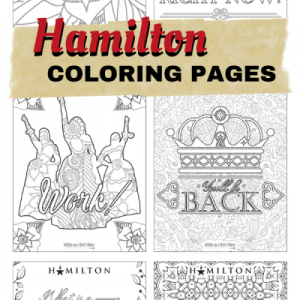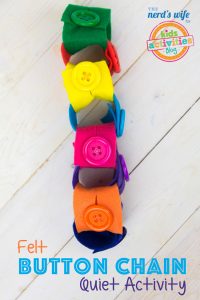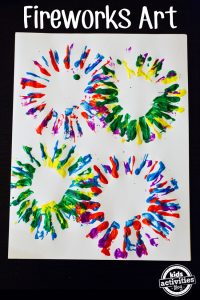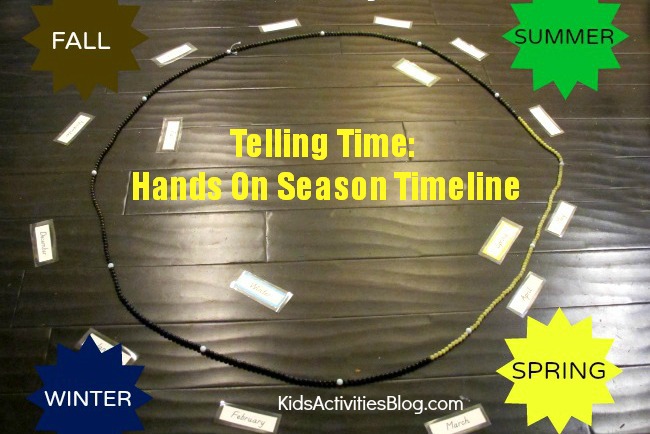
Telling time is difficult for your children to understand. This Season Timeline can help your little one begin to grasp the passage of time. Kids Activities Blog hopes your child enjoys this hands on activity with a Montessori approach.

Telling Time
Telling time within Montessori falls into the History curriculum. Young children don’t have the cognitive ability to know the difference between “five minutes” or “five hours” until around age 8. So within early childhood, History is simply about learning the passage of time and the duration of time. Time is such an abstract, non-tangible idea even to us adults. Imagine what it is like for children who developmentally cannot even comprehend a second versus a decade. So, integrating hands on, concrete materials is key at this stage of development.
One material useful in the early childhood classroom is the “Seasons Timeline”.
Season Timeline
Materials and Approach for Telling Time Activity
- Clear images to represent each of the four seasons. These images should be mounted on four different colored paper to represent the seasons, or color coded somehow. I used personal photos from over the years, which I think is great for engaging a child because he can relate to the photos. You don’t need too many images for each season. I created 6 for each season. I laminated the cards so I can use them for other activities and so they will last many years.
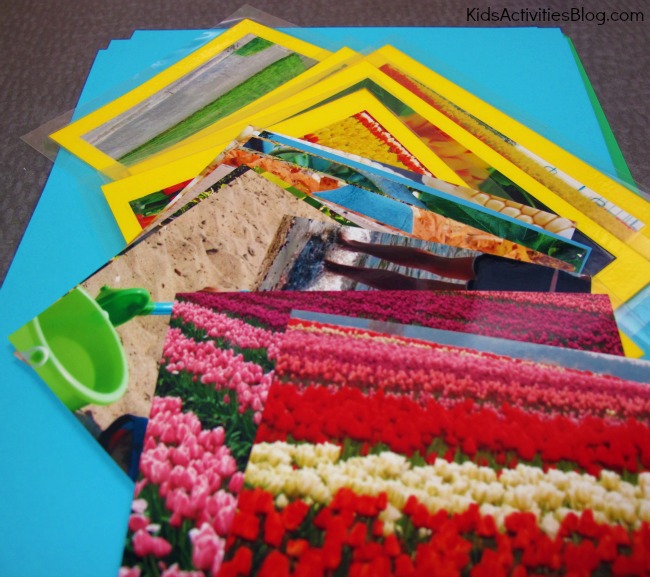
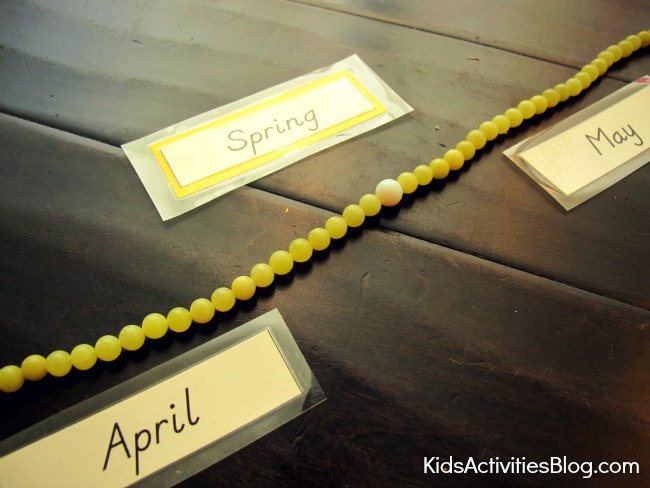
- Timeline device. I used beads but you can use a scroll, a circular quilt or ribbon too. Get creative! You will need 365 beads to represent each day of the year and 12 beads to represent the ending and beginning of each month. I chose four different colored beads to represent the seasons. The colors matched the card stock onto which I placed my seasons images. I chose a distinguishable white bead to represent the beginning and ending of each month. You will need some wire to strong the beads.
Montessori Approach
- Begin with a Book. Present the seasons timeline to the child by reading a book about the seasons. There are some wonderful books about the seasons from which to choose. I recommend keeping it simple. Then segue into the timeline.
- Introduce the parts and materials of the timeline: “These are the beads. There are 365 beads; each one represents a day.” Ask if he observes anything about the beads (e.g. there are four colors) and talk about how those colors represent the seasons. Do the same for the 12 white beads. Lay out the timeline with the seasons labels and the months labels (although for younger children who do not yet know how to read, you can wait to introduce these cards). Bring out the cards. Talk about the four colors. Ask what he sees in the images. Invite him to sort the images by season.
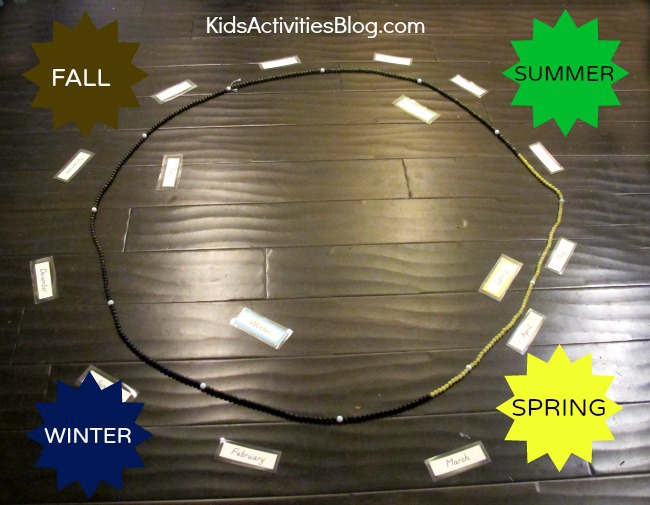
Hands On
Unfortunately, or fortunately depending on how you look at the situation, this activity is extremely hands on during the introduction period. So I was unable to get an truly representative image of my boys working with and exploring the beads. I presented the beads on a white rug also which helps to define the months and the seasons for you and your child. Once the introduction is complete, let the child know the work is available to him to explore when he chooses to do so.
I love this activity because it is holistic. It involves movement, language, problem solving, logic and history. Plus working with beads is something I don’t often get the chance to do. The texture and general sensory experience even for us adults is quite remarkable.
Thanks for reading this telling time activity today. Please let me know if you have any questions!
Marnie
More Kids Activities
We would love to hear how your child interacted with this telling time activity. What was their favorite way to explore the season timeline? For more great time and season kids activities, you might want to check out these ideas:
- Activities for Telling Time
- Nature Activities for any Season Timeline
- Fine Motor Skills {Montessori Approach}

